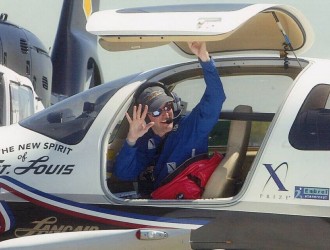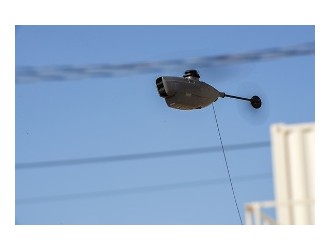The Boeing Company is studying the idea that pilotless airplanes might one day be possible, and perhaps even necessary if aviation is going to continue to grow.
“What we’re saying is that were exploring the building blocks to understand first, is it technically possible?” said Boeing’s Vice President of Product Development Mike Sinnett. “Second, is it responsible? And third, is it something we need to do as an imperative?”
Boeing is forecasting the world’s airlines will need 1.5 million pilots over the next 20 years, based on a forecast wher commercial passenger traffic continues to grow at a rate of 4.8% a year. Last year, Boeing forecast the world’s airlines would need more than 40,000 jets over that same period.
“The development of the technology and the capability needs to be such that it doesn’t inhibit growth of the industry at the safety level we have today,” Sinnett said.
While companies like Google have been pursuing self-driving cars, even self-driving trucks with the goal of moving through traffic without incident, airliners have in many ways been further ahead for longer, but with a human pilot always possessing the ultimate authority. Auto pilots in various forms are almost as old as aviation itself. Today’s airliners can self-navigate and even land themselves.

Some technologies have stopped common forms of pilot error. One is the Enhanced Ground Proximity Warning System developed by Honeywell in Redmond. The system has put a stop to what was once a leading cause of fatal accidents, Controlled Flight Into Terrain (CFIT). EGPWS warns pilots both verbally and paints a picture on the airplane’s weather radar or other display in yellow, that he or she is getting close to a mountain, tall radio tower, building or even flying straight into flat ground, and will hit it if there is not a change in course. If the pilot doesn’t respond, the machine warns the pilot to “pull up, pull up” and the obstacle turns red on the display.
But Sinnett says there may be many stops along the way between what we have now and fully autonomous flight, if we even get there.
He suggests that cargo aircraft could potentially go down to one pilot. Future airline pilots might be far less experienced than they are now. For generations, pilots have typically come out of the military or accumulated thousands of flying hours with small cargo companies and working their way up through regional airlines. American pilots often start out taking flying lessons when they’re young getting “stick and rudder” experience and getting the feel of flying board small aircraft.
The cockpit of the future may make up for the difference with less experienced pilots by using computers that can present those pilots sets of options on how to resolve various situations. The human still has the ultimate authority, but it’s the plane doing more and more of the thinking.
The FAA says there are 24,000 flights over the United States every day. Flying has never been safer. Sinnett says for Boeing, safety will always be at the center of the company’s culture, as it explores what technology may or may not hold for a future wher planes might think for themselves.





